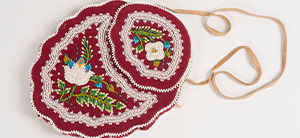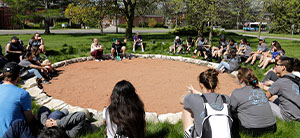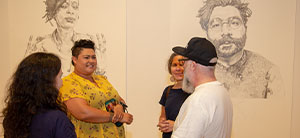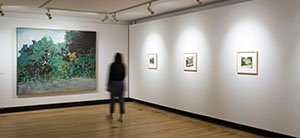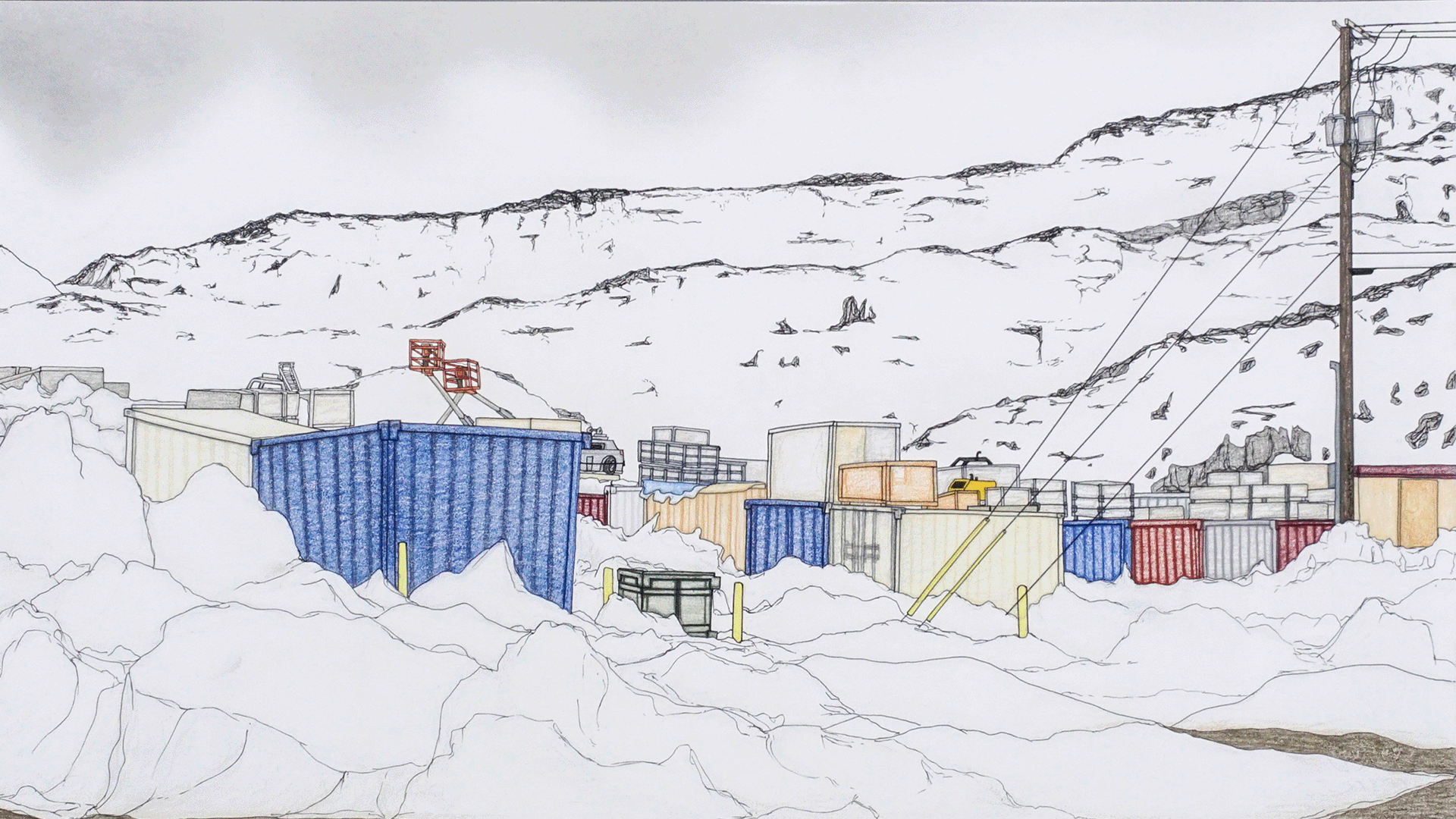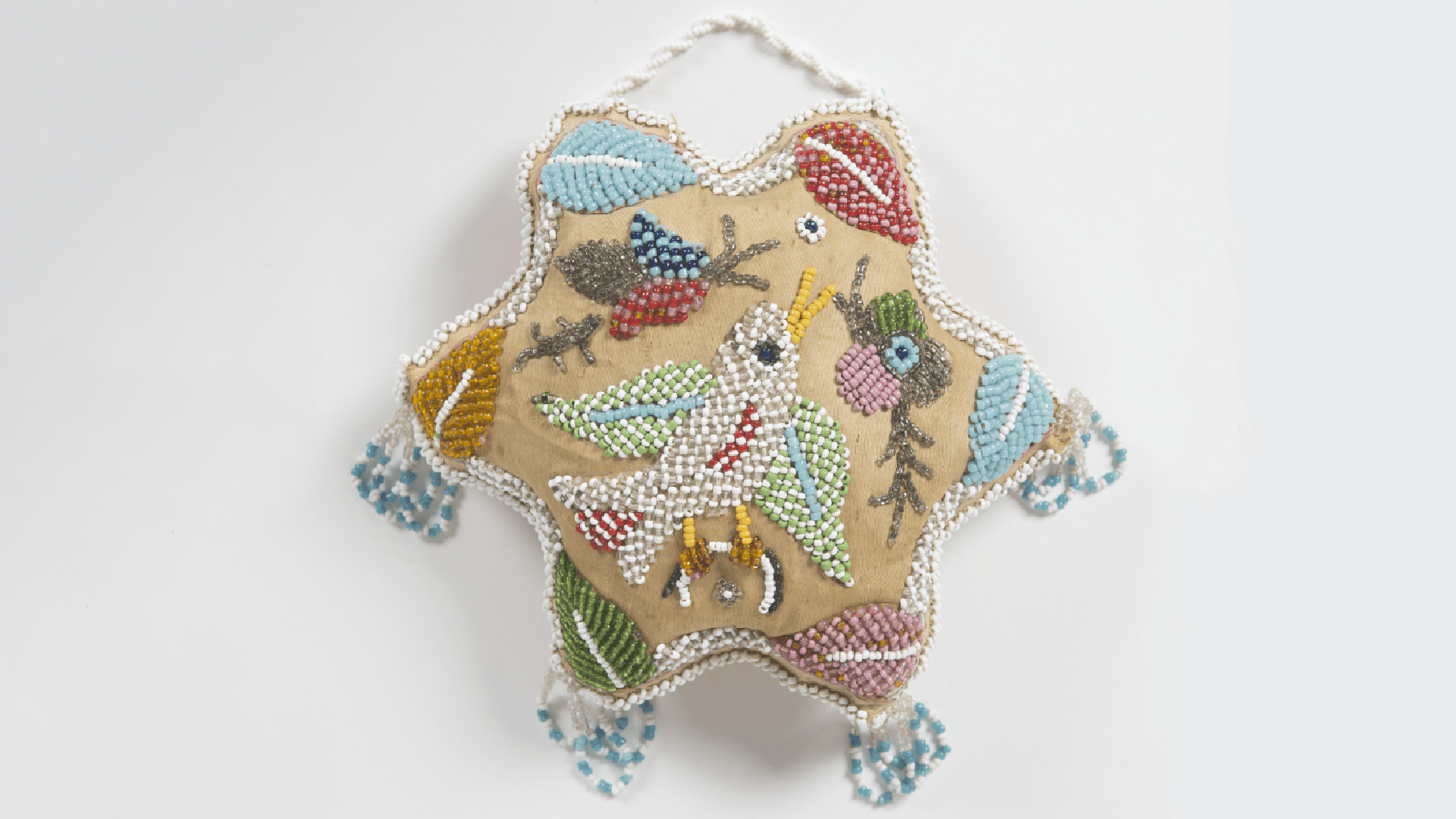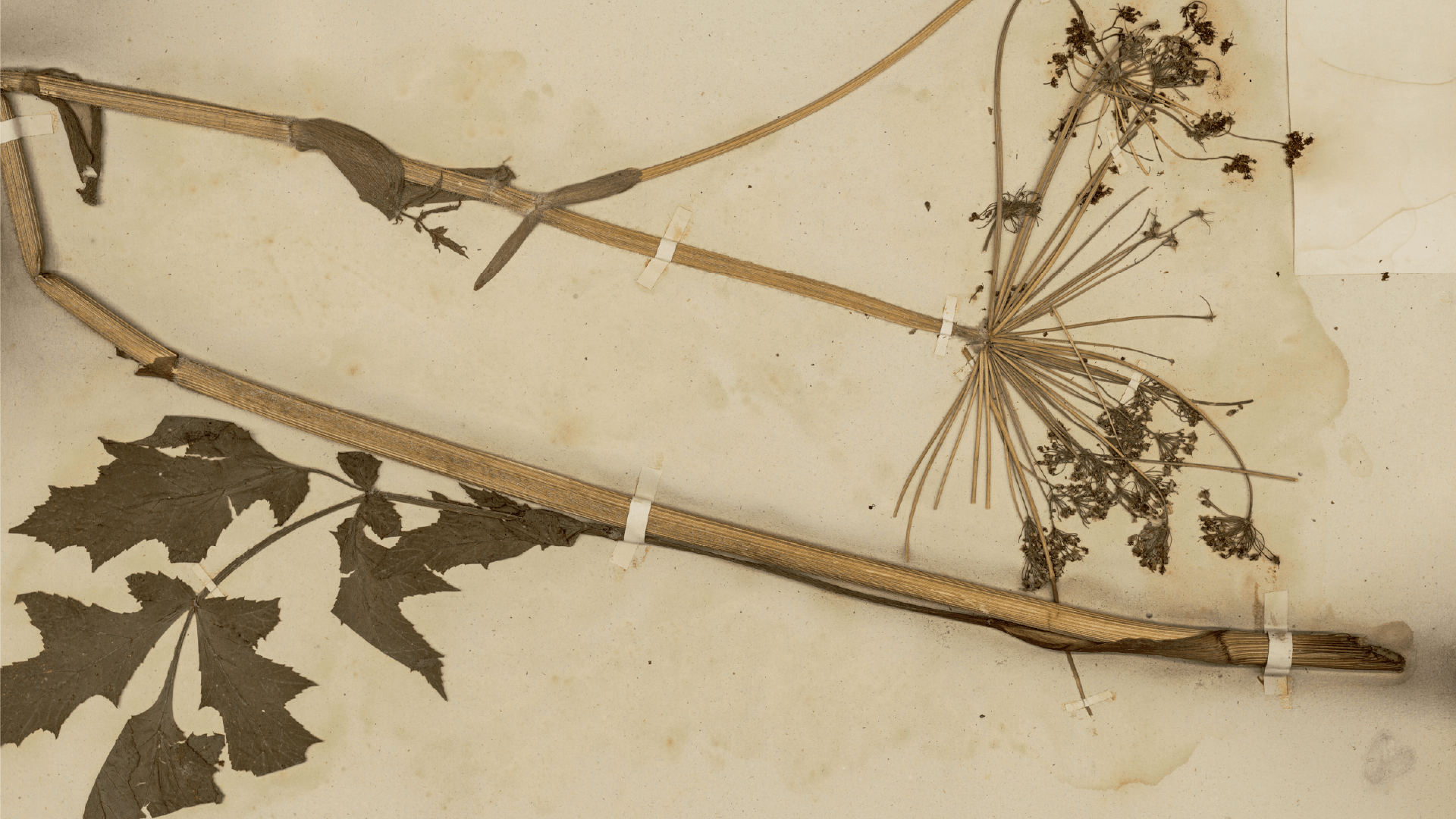
Anahita Norouzi: Planting Displacement
Amin Alsaden
The work of Montreal-based Iranian artist Anahita Norouzi stems from her long-term research into the intersections of identity and memory, especially in relation to experiences of immigration and displacement. This exhibition examines the legacies of botanical explorations, when scientific research and agricultural production became entangled in the exploitation of non-Western geographies, shaping cultural attitudes towards the human and non-human “other.” By underlining hostilities towards displaced persons and migrating plants alike, through terminology used to describe both as foreign and invasive, Norouzi draws attention to the fragile and conflicted state of those who had to leave their homes behind.
Planting Displacement brings together an expansive body of her work that includes archival documents, photographs, cyanotypes, sculptures, and videos, all of which investigate the plant colloquially referred to as giant hogweed. Originating in Southwest Asia and known in the artist’s ancestral homeland of Iran as Heracleum persicum (Persian hogweed), the plant spread to the West in the nineteenth and twentieth centuries through European colonial interventions, trade routes, and Western interest in acquiring “exotic” species. In recent decades it has been recognized as a noxious weed in southern Canada affecting native flora and fauna, and human beings too, due to its toxic sap. Today, there are national campaigns to not only ban the cultivation of this plant, but to also eradicate and curb its growth. Norouzi sheds light on the history and changing perceptions of giant hogweed, while marking its gradual disappearance.
Download the exhibition pamphlet >
Image detail: Anahita Norouzi, Arid Florilegium (detail), 2022, archival prints on paper and archival matte paper, 23 x 35 cm

Planting Displacement is organized and presented by the Art Gallery of Guelph with the support of the Canada Council for the Arts and Ontario Arts Council.
Gallery
Bios
Anahita Norouzi
Anahita Norouzi is a Montreal-based multidisciplinary artist, originally from Tehran. She has continued to travel between Iran and Canada to conduct her research exploring the notions of displacement, memory and identity from a psycho-historical point of view. Norouzi excavates historical narratives, in order to consider the global impact of colonialism and how it permeates contemporary culture. Her work is research-driven, instigated by marginalized or forgotten histories, and articulated across a range of materials and mediums including sculpture, installation, photography, video, and performance. Represented in both individual and collective exhibitions, she is the recipient of both the Grantham Foundation Award and Liz Crockford Artist Fund Award, as well as a finalist for the Magic of Persia Contemporary Art Prize recognizing pieces exhibited at the Royal College of Art in London and in Dubai. Her work is currently on view at Montreal Museum of Fine Arts.
Amin Alsaden
Amin Alsaden is a curator, educator, and scholar of art and architecture, whose work focuses on transnational solidarities and exchanges across cultural boundaries. With a commitment to advancing social justice through the arts, Alsaden’s curatorial practice contributes to the dissemination of more diverse, inclusive, and global narratives, by decentering and expanding existing canons, and challenging hegemonic knowledge and power structures. He is particularly interested in how artists and architects interrogate collective agency in the public realm and level institutional critique, while envisioning novel visual and spatial responses to the experiences of alienation and belonging. Alsaden’s research explores the history and theory of modern and contemporary art and architecture globally, with specific expertise in the Arab and Muslim worlds. He has published and lectured widely.
View More Exhibitions

exhibition
September 18.2025 / January 4.2026
Challenging colonial conceptions of how Land and Water are used, valued, and protected, Reworldings speaks to living relationships with place and peoples, to the interdependence of species and systems, and to the urgent need to restore not only ecosystems, but justice.

exhibition
September 18.2025 / January 4.2026
Through practices that span net art, interactive sculpture, installation, video, and textile, Soft Internet Theory invites audiences to consider a gentler, more human digital future.

exhibition
May 22.2025 / August 29.2025
Fuzzy Thinking explores how textiles’ softness and tactility challenge boundaries between art and craft, weaving together historical and contemporary works rooted in material and cultural complexity.
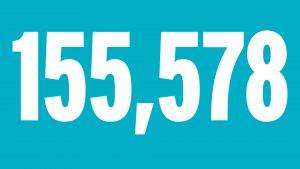
exhibition
May 22.2025 / August 29.2025
Curated through an open call, artists from across Guelph were invited to share their work in a collective reflection of the city’s creative landscape.

exhibition
May 3.2025 / May 8.2025

exhibition
April 24.2025 / April 29.2025
Through photography, Bahar Enshaeian unravels the intricate layers of memory, identity, and belonging. Rooted in personal experience, her work speaks to the complexities of migration, displacement, and the search for home.
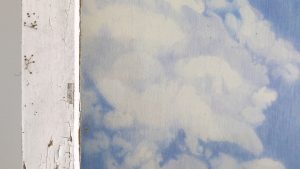
exhibition
April 10.2025 / April 15.2025
What utility can we find in vestiges of the past? This question shapes Hal Fortin’s interdisciplinary practice and its distinct sculptural language, punctuated by humour, dream logic, and the rhythms of domestic labour.
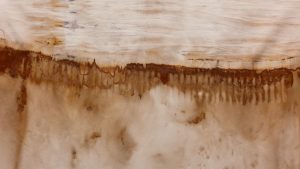
exhibition
April 2.2025 / April 6.2025
At the heart of Stephanie Fortin’s practice is an ethical inquiry: is it necessary—or responsible—to aestheticize waste in the context of global exploitation and climate change?



